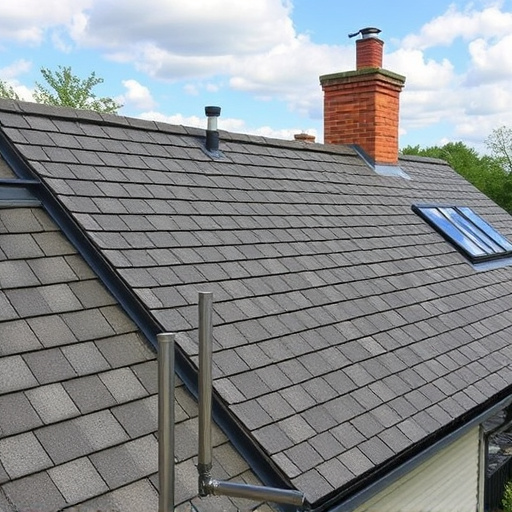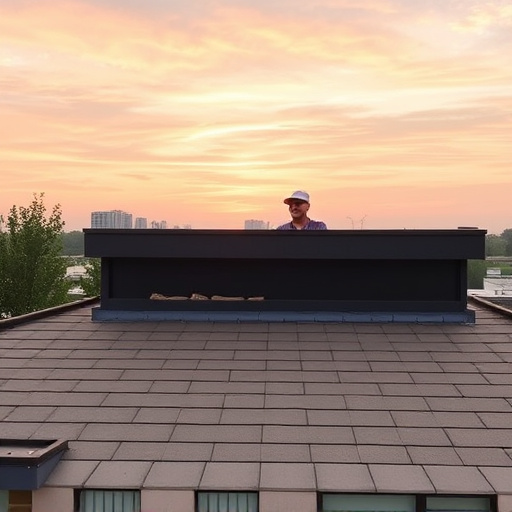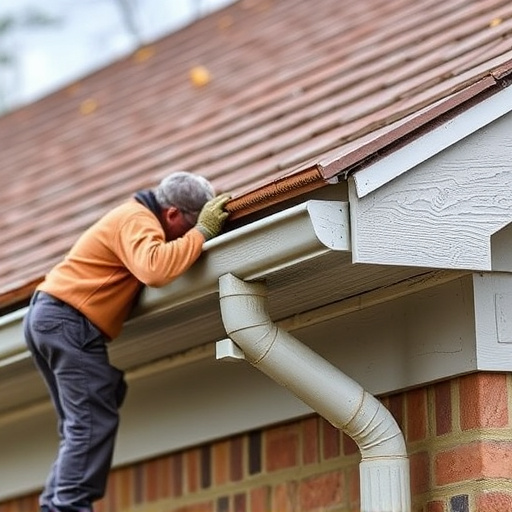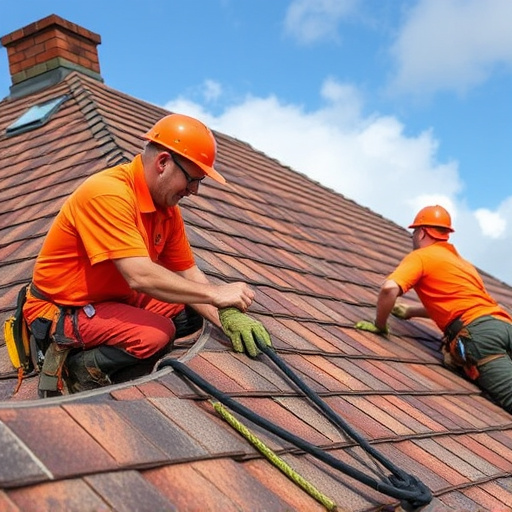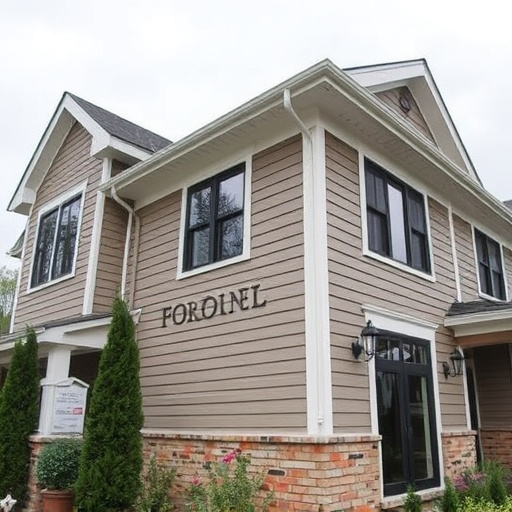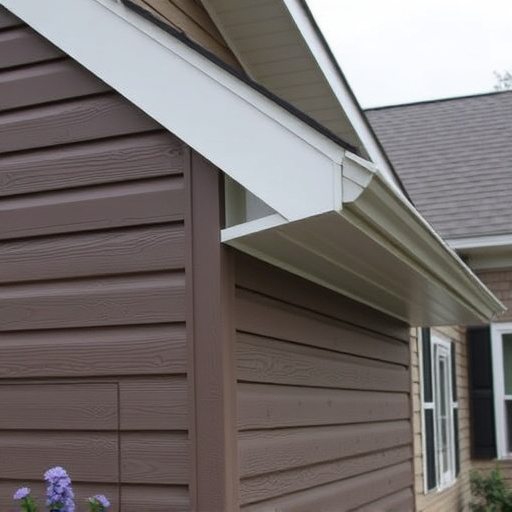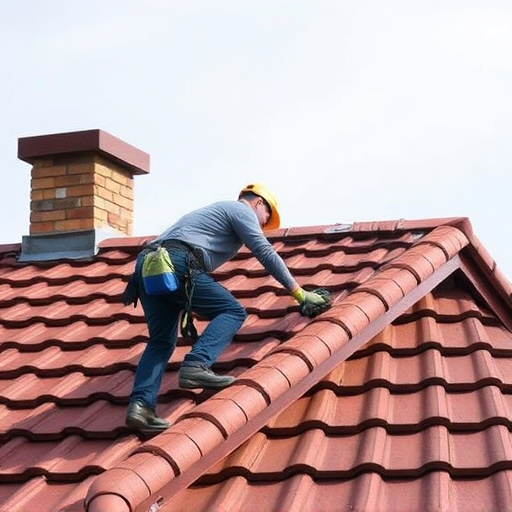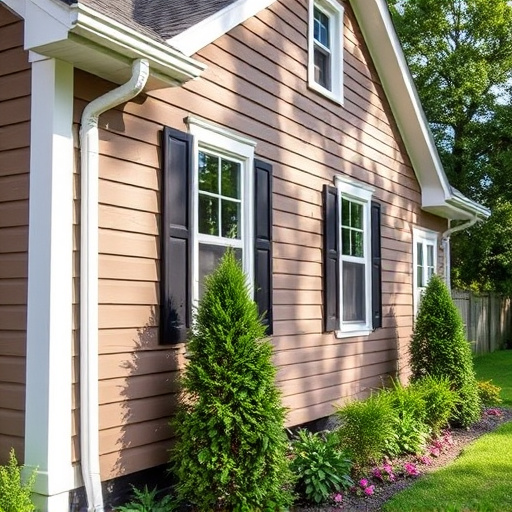Roof repairs vary based on roof type. Flat roofs require sealing with specialized membranes like EPDM and TPO to protect from weather. Sloped roofs focus on patching missing or damaged shingles, flashing, and gutters. Low-pitch roofs need advanced membrane systems or specialized shingles due to water pooling risks. Regular inspections by professionals are crucial for all types to prevent extensive damage and costly replacements.
Roof repair is a crucial aspect of maintaining any structure, with each roof type requiring specialized care. This comprehensive guide explores the nuances of repairing flat, sloped, and low-pitch roofs, offering insights into effective techniques and materials. From understanding the unique challenges of flat roofs to assessing and addressing damage on pitched structures, we provide valuable information for both professionals and homeowners. Discover expert tips and learn how to navigate these repairs, ensuring your roof’s longevity.
- Understanding Flat Roof Repairs: Techniques and Materials
- Sloped Roof Damage Assessment and Common Repair Methods
- Low-Pitch Roofs: Specialized Care for Delicate Repairs
Understanding Flat Roof Repairs: Techniques and Materials
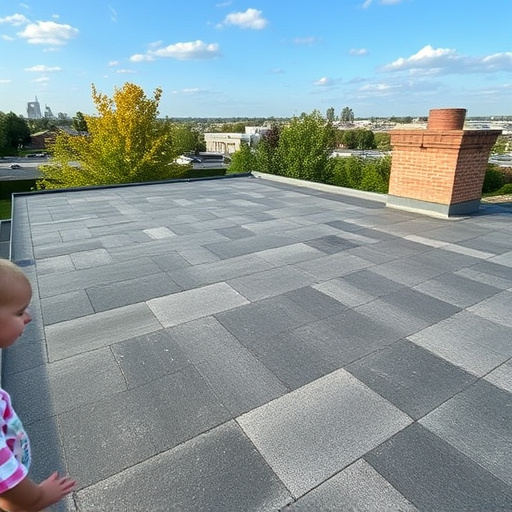
Flat roofs are a common sight in many urban landscapes, offering practical advantages for both residential and commercial buildings. When it comes to repairs, understanding the unique challenges of flat roofs is essential. The primary techniques involve sealing any leaks or damage using specialized membranes or coatings designed to withstand the constant exposure to weather elements. These materials, ranging from EPDM (Ethylene Propylene Diene Monomer) to TPO (Thermoplastic Olefin), offer durability and flexibility, ensuring a robust fix.
Roof repair for flat roofs often requires precise evaluation by roofing services professionals who can identify weak points. This meticulous process involves examining the existing membrane or coating, patching small damages, or replacing large sections as needed. Unlike sloped or low-pitch roofs, flat roofs demand specialized knowledge and materials to maintain their integrity. A roof consulting expert can provide tailored solutions, ensuring long-lasting repairs and protecting the building’s internal structure from potential water damage.
Sloped Roof Damage Assessment and Common Repair Methods
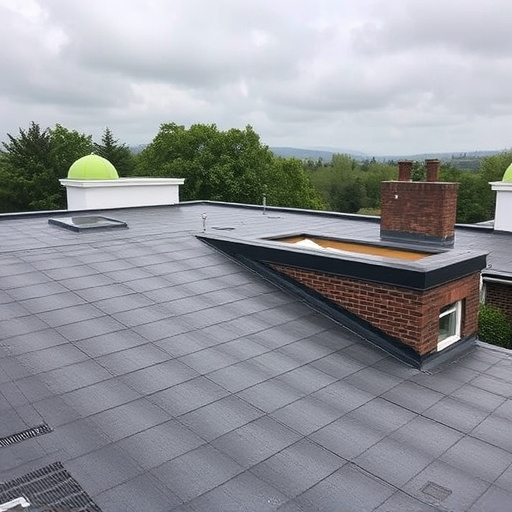
When assessing sloped roof damage, it’s crucial to inspect for common issues like missing or damaged shingles, flashing, and gutters. These components are vital for protecting your home from water intrusion and structural damage. Regular maintenance and prompt repairs can significantly extend the lifespan of a sloped roof.
Common repair methods for sloped roofs involve replacing missing or badly damaged shingles, securing loose ones, and repairing or replacing flashing around chimneys and vents. For extensive damage, re-shingling the entire roof may be necessary. Professional roofing services often recommend regular inspections to identify and address issues early, ensuring the longevity of both residential roofing and siding repairs.
Low-Pitch Roofs: Specialized Care for Delicate Repairs
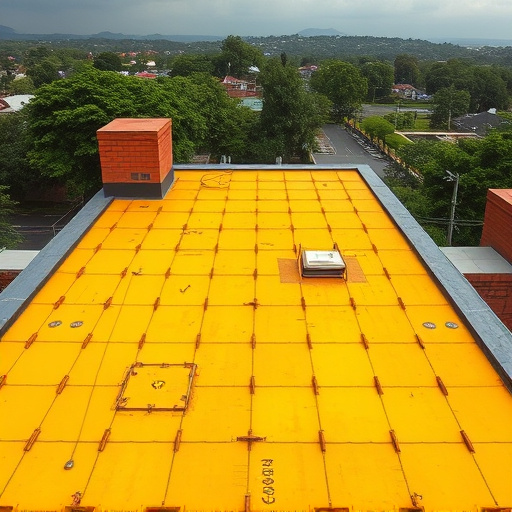
Low-pitch roofs, typically characterized by their gentle slopes, present unique challenges for repairs. Due to their design, these roofs are particularly vulnerable to water pooling and seepage, which can lead to significant structural damage over time. Specialized techniques and materials are often required for effective roof repair in such cases. Traditional methods might not be adequate as they may not address the underlying issues effectively, causing repeated repairs.
For delicate low-pitch roof repairs, it’s crucial to consider materials that offer superior water resistance and durability. Advanced membrane systems or specialized shingles designed for low-slope applications can provide enhanced protection against moisture intrusion. Additionally, employing expert roofing contractors well-versed in these specific repair techniques is essential to ensure the longevity of the roof and avoid costly replacements, including siding replacement or even a complete roof replacement.
Roof repair is a multifaceted endeavor, with varying techniques tailored to flat, sloped, and low-pitch roofs. Understanding these differences ensures effective and durable solutions for each unique structure. By employing the right materials and methods, from flat roof repairs to addressing delicate low-pitch concerns, homeowners can maintain their property’s protective barrier against the elements. This comprehensive guide equips readers with knowledge to navigate roof repair, promoting peace of mind and ensuring a secure, well-maintained sanctuary above.



